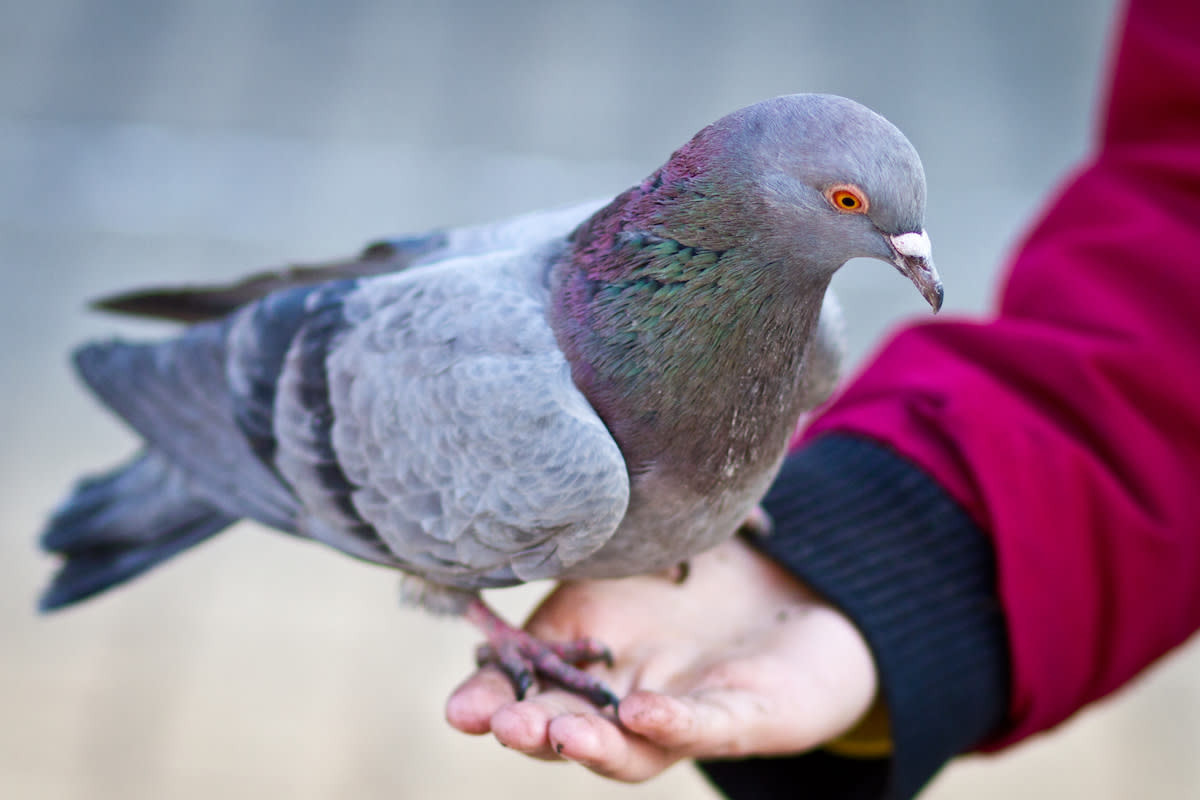Heartbreaking 'True History' of Pigeons Has People Shocked and Saddened

Of course you know pigeons, they are a ubiquitous bird in cities throughout the world. They cluster on steps and asphalt and nest under eaves and on signs. They eat trash and poop everywhere. Possibly you have heard them called “rats with wings” or thought of them as a nuisance.
But the pigeons that populate the urban environment nowadays are not actually wild animals—no, they are feral colonies, like feral cat colonies that arise when people do not properly care for their domesticated species. Because pigeons, it turns out, are one of the oldest domesticated species on Earth.
View the original article to see embedded media.
The true history of pigeons is one of thousands of years of careful cultivation by humans, followed by nearly utter abandonments in the last century. We think of pigeons as a nuisance today, but for almost the whole of human history, they were a vital source of food, sport, and even communication.
Related: Pigeon Builds a Nest in NYC Apartment Window and Everyone Is Invested
Next time you see one of those rough-looking feral pigeons out on the sidewalk, remember that they never asked for this.
Where Do Pigeons Come From?
Pigeon is a generalized term for a variety of breeds and even species of birds, but the urban pests most people use the word for are technically “rock doves.” The wild version of the animals are native to the cliffs and mountainsides of Northern Africa, Southern Europe, and the Middle East, and that is where their tangle history with humans begins. Over five thousand years ago, people in Mesopotamia had already domesticated the creatures we now know as pigeons and were using the animal as a food source, much as we now rely on chickens or turkeys. Pigeon remained a popular dish across Europe and even America until the early twentieth century. Alongside people’s henhouses, they often kept “dovecotes” which is where their pigeon livestock would roost. Pigeons, however, are not suited for factory farming, and between the rise of that method of food production and also people’s association of feral pigeons with filth, they are not longer a popular menu item.
As far back as three thousand years ago, pigeons also formed a vital part of communication networks. Homing pigeons were trained to carry messages across great distances. Genghis Khan had a pigeon network that crossed all of Eastern Europe and Asia. (The “ravens” of Game of Thrones are based on actual pigeon post.) This method of carrying messages lasted all the way until the 1940s.
Telephones killed the pigeon.
Thanks to modern technology, these vast populations of messenger birds were not required, and people abandoned their pigeon populations to the wild, which gave rise to the feral, urban flocks you see in cities to this day. Can you imagine if we did that with every chicken on every farm?
The pigeons are unhealthy because they are not meant to live in the wild, and their feces are terrible because that is not the diet they are meant to eat. Rather, like most birds, they are meant to eat seeds and insects, not dropped hotdogs and wayward bits of bagels.
Fun Facts About Pigeons
Pigeons have dozens of breeds, just like dogs. some which look very different from one another and were bred for particular reasons, like meat, racing, or homing qualities. One type of “pigeon” you are probably familiar with is the broad-tailed all-white dove often released to mark ceremonies or as a symbol of peace. That’s right, folks, doves are also pigeons.
When you eat a pigeon, you rarely call it a pigeon (except in pigeon pie). On a plate, the dish is usually referred to as “squab.” Now you know.
Looking for more PetHelpful updates? Follow us on YouTube for more entertaining videos.
Or, share your own adorable pet by submitting a video, and sign up for our newsletter for the latest pet updates and tips.
